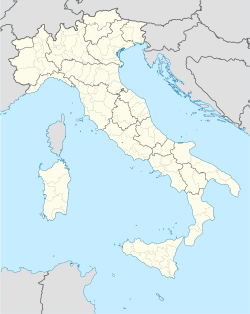Latisana | |
|---|---|
| Città di Latisana | |
 Cathedral of Latisana | |
| Coordinates: 45°47′N13°07′E / 45.783°N 13.117°E | |
| Country | Italy |
| Region | Friuli-Venezia Giulia |
| Province | Udine (UD) |
| Frazioni | Latisanotta, Gorgo, Pertegada, Latisana Marittima, Bevazzana |
| Government | |
| • Mayor | Lanfranco Sette (centre-right) |
| Area | |
• Total | 37.8 km2 (14.6 sq mi) |
| Elevation | 7 m (23 ft) |
| Population (31 August 2017) [2] | |
• Total | 13,539 |
| • Density | 358/km2 (928/sq mi) |
| Demonym | Latisanesi |
| Time zone | UTC+1 (CET) |
| • Summer (DST) | UTC+2 (CEST) |
| Postal code | 33053 |
| Dialing code | 0431 |
| ISTAT code | 030046 |
| Patron saint | St. John the Baptist |
| Saint day | June 24 |
| Website | Official website |
Latisana (Friulian : Tisane, locally Tisana) is a town and comune (municipality) in the Regional decentralization entity of Udine in the region of Friuli-Venezia Giulia, north-eastern Italy, on the Tagliamento river.




